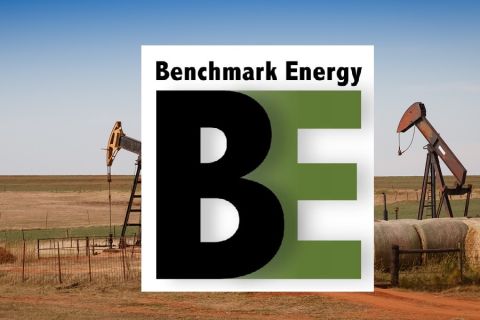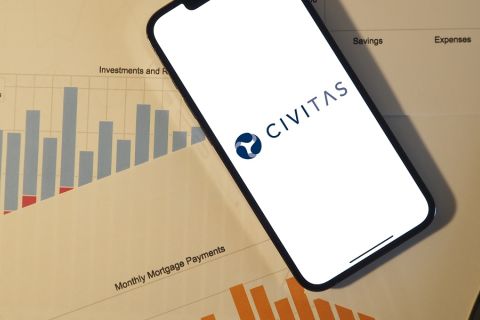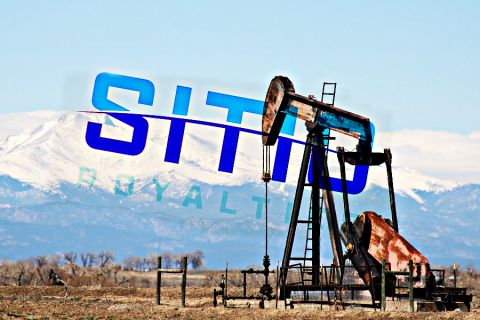
ConocoPhillips’ stock jumped nearly 4.6% to $122.02 after it announced it would raise its quarterly ordinary dividend by 14%. (Source: Shutterstock)
ConocoPhillips is well aware that other big oil companies are consolidating, thank you very much.
“Before I get into the details, I wanted to address the topical news in the industry, which has been the M&A headlines in recent weeks,” ConocoPhillips CEO Ryan Lance said in the company’s Nov. 2 earnings call. “This is not a surprise to us. We have long said that we expect to see further industry consolidation. ConocoPhillips remains steadfast in our returns-focused value proposition and cost-to-supply principles, which creates a high bar for M&A.”
Lance said ConocoPhillips has a 10-year plan and is “sticking to it.” The plan, announced in April, is an anomaly among large oil companies, but in the news of the day it seemed to be working; ConocoPhillips’ stock jumped nearly 4.6% to $122.02 after it announced it would raise its quarterly ordinary dividend by 14%. The plan, contingent on $60/bbl WTI mid-cycle price, seeks to generate more than $115 billion in free cash flow, according to an April 12 ConocoPhillips press release.
Mizuho analyst Nitin Kumar said Lance’s decision to address the acquisition issue less than two minutes into the call was a welcome break from the cautious executive talk that typical of most earnings calls.
“I loved it,” Kumar told Hart Energy. “It was good for them to address that off the top without waiting for somebody to ask them that. It just shows their proactive nature.”
On the call, Goldman Sachs analyst Neil Mehta praised the company’s “steady” 7% growth rate, while Bank of America analyst Doug Leggate noted the company has shown “reliable production growth.”
Lance portrayed the dividend boost as part of the company’s plan.
“Based on our mid-cycle price call, you can expect us to deliver at least 30% of our cash flow back to our shareholders. We’ve said when the prices are in excess of our mid-cycle price call—which is where the prices are today, and where they’ve been over the last few years—you should expect us to be delivering more of our cash back,” Lance said. “That's the construct we have and we’re sticking to that. We think it’s served the company pretty well. … This year, we expect cash flow of close to $22 billion and we're giving half of that back to our shareholders.”
In response to one analyst question, without naming other companies Lance said some recent acquisitions may have been overpriced.
“Those are really good companies that were bought. Clearly, they have good assets. We’re pretty familiar with them. We’ve watched them for a long period of time, and they’re good companies with good assets,” he said. “We’re in a part of the cycle that’s a little frothy and probably in a higher mid-cycle price than we would subscribe to them.”
He said the Houston-based company continues to watch for M&A opportunities—if they fit its 10-year plan.
“It has to meet our financial framework. We’ve got to see a [clear] way to make the asset better, and does it make that 10-year plan better? Which is a pretty high hurdle,” he said.
Lance said ConocoPhillips has an international portfolio that differentiates itself from peers pursuing consolidation, citing progress with the company’s work in China, Canada, the Netherlands and Norway. He pointed to three project developments ahead of schedule in Norway and continued work to secure 1.5 million tons per annum at an LNG terminal in the Netherlands.
ConocoPhillips leaders addressed the company’s plans and returns in terms of decades at several points during the call.
In the nearer term, Andrew Lundquist, senior vice president of government affairs, said ConocoPhillips expects a court ruling this month on Willow, a major oil development in Alaska slowed by lawsuits after federal government approval.
For the third quarter, ConocoPhillips generated $5.5 billion in cash from operations and $2.9 billion in free cash flow, returning $1.3 billion to investors. The company averaged 1.8 MMboe/d in the third quarter, most of it in the Lower 48. Adjusted earnings were $2.6 billion, and adjusted earnings per share were $2.16.
Recommended Reading
Benchmark Buys Revolution Resources’ Anadarko Assets in $145MM Deal
2024-02-20 - Benchmark Energy II is acquiring Revolution Resources just over four years after Revolution bought out Jones Energy Inc.’s Midcontinent portfolio.
Brett: Oil M&A Outlook is Strong, Even With Bifurcation in Valuations
2024-04-18 - Valuations across major basins are experiencing a very divergent bifurcation as value rushes back toward high-quality undeveloped properties.
Civitas, Prioritizing Permian, Jettisons Non-core Colorado Assets
2024-02-27 - After plowing nearly $7 billion into Permian Basin M&A last year, Civitas Resources is selling off non-core acreage from its legacy position in Colorado as part of a $300 million divestiture goal.
Sitio Royalties Dives Deeper in D-J with $150MM Acquisition
2024-02-29 - Sitio Royalties is deepening its roots in the D-J Basin with a $150 million acquisition—citing regulatory certainty over future development activity in Colorado.
Vital Energy Again Ups Interest in Acquired Permian Assets
2024-02-06 - Vital Energy added even more working interests in Permian Basin assets acquired from Henry Energy LP last year at a purchase price discounted versus recent deals, an analyst said.





